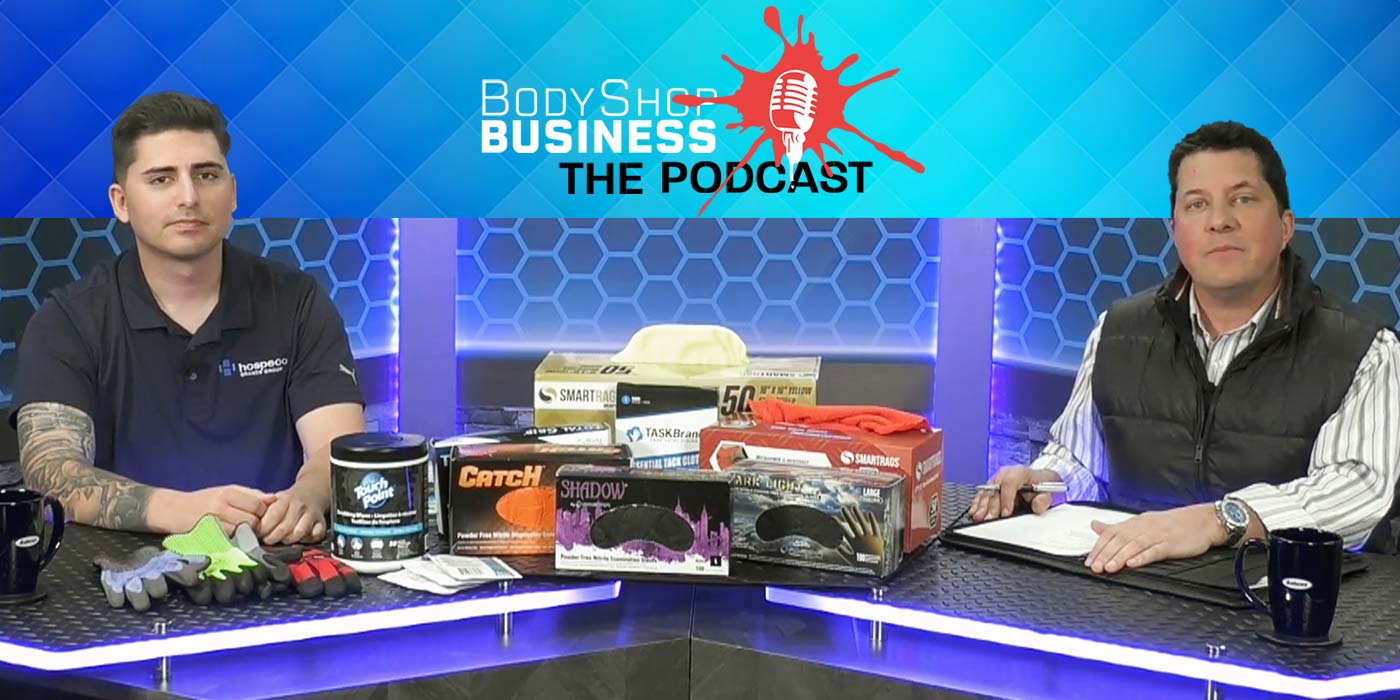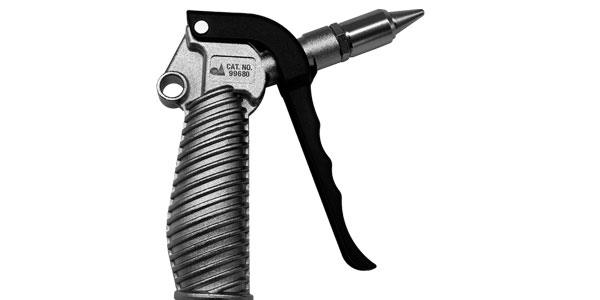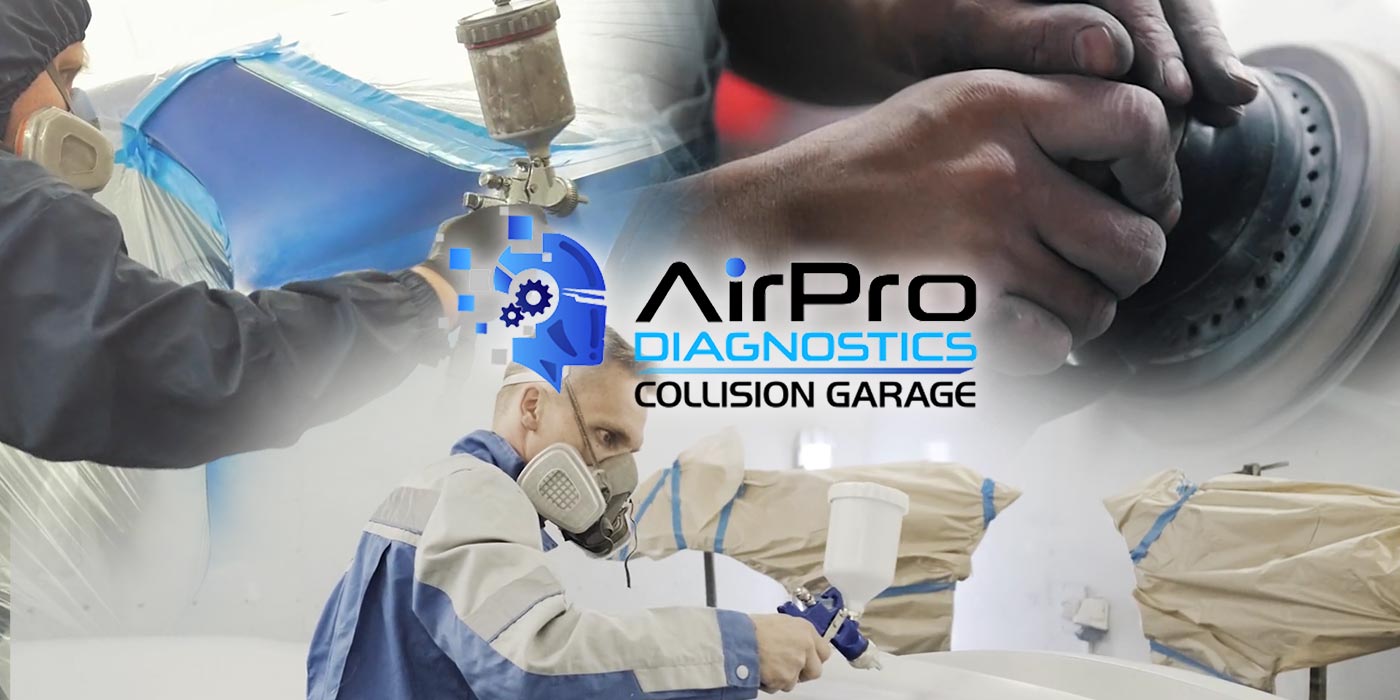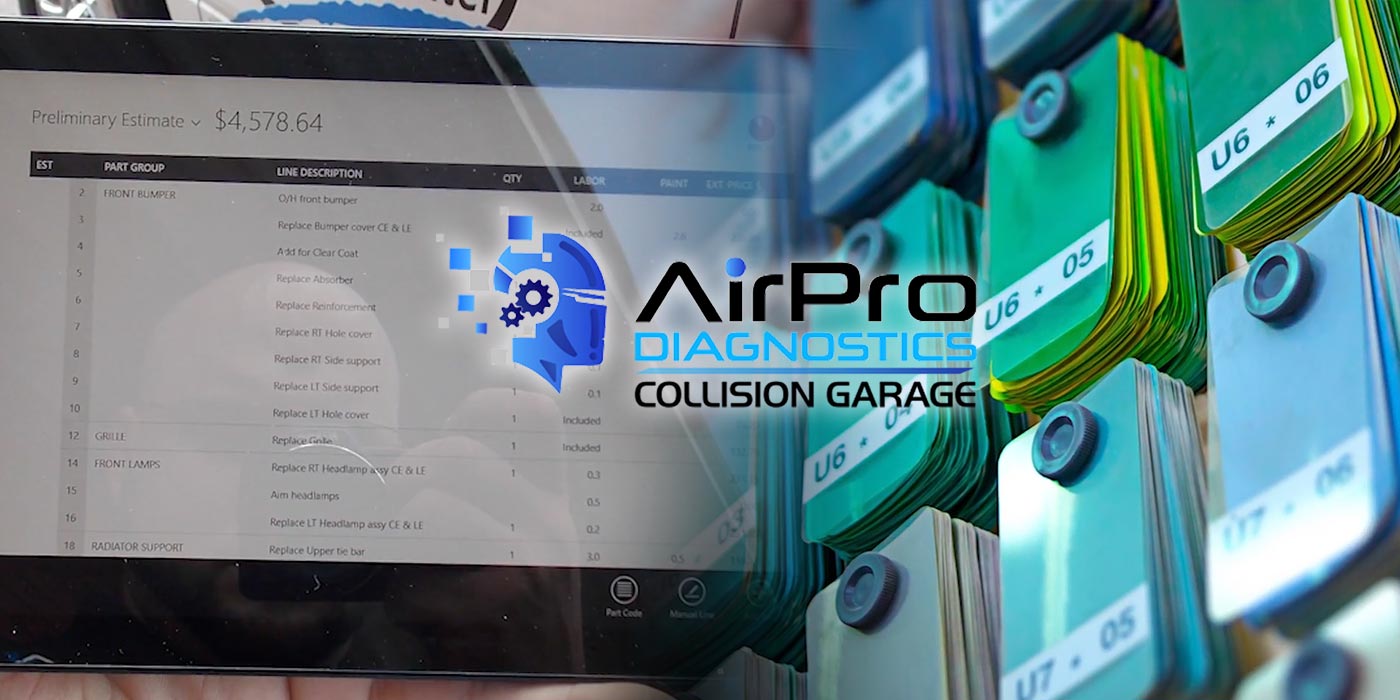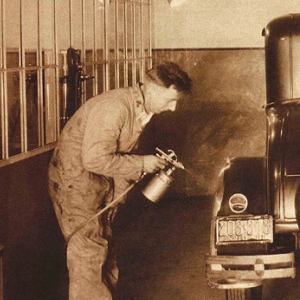 Looking at past auto paint trends with the benefit of hindsight, the logic and genius as well as the folly of some is revealed. Predicting future trends is difficult, yet somewhat possible if we consider the causes driving changes in our industry: free market innovations, government regulation, a marriage of the two, and unforeseen advantages and disadvantages that perpetuate innovation.
Looking at past auto paint trends with the benefit of hindsight, the logic and genius as well as the folly of some is revealed. Predicting future trends is difficult, yet somewhat possible if we consider the causes driving changes in our industry: free market innovations, government regulation, a marriage of the two, and unforeseen advantages and disadvantages that perpetuate innovation.
Buggin’ Out
In the beginning, cars were painted at the factory with shellac-based paint applied with a brush. Shellac has been around for thousands of years and is derived from the resinous secretion of the lac insect found primarily in the Far East. It isn’t particularly durable, and it gave way to nitrocellulose lacquer in the 1920s, which is derived from plants. However, while lacquer increased production due to its faster drying properties, it didn’t lend itself to being brushed on. Hence, the debut of the spray gun in the automotive industry around 1924.
The creation of the spray gun is universally credited to Dr. DeVilbiss in the mid-1880s. His device was initially created to atomize medicine for application in the throat and mouth. Regardless of the atomizer’s intended use, it revolutionized automotive painting, and thus allowed for future developments such as colors with suspended effects like metallics, which were previously unattainable with brush-applied paint. It’s an innovation that gave birth to custom colors and multi-stage paints, which continue today.
1930s
We saw alkyd enamels come to use in the 1930s. Still a product derived from organic compounds, the glycerin used in its manufacture was derived mainly from animal and vegetable fats. This enamel brought increased durability and gloss, as well as a wider range of colors. However, the slower drying time hindered production. Again, the free market drove innovation, and acrylic lacquer was developed following World War II.
Acrylic lacquer was a thermoplastic material that could be reflowed at high temperature, adding depth and gloss to the factory finish. Furthermore, it brought speed and even more color possibilities to us. We don’t know the name of the insightful painter who first swept up metal shavings, put them in his paint gun and thought to himself, “Crazy…but I’m gonna try it,” giving birth to metallics. We also don’t know when he did it. But we do know that paint manufacturers recognized the trend, and metallics were introduced in the 1960s.
Acrylic Resins
Further innovation brought acrylic resins to enamels, and acrylic enamel hit the scene, a thermoset material that can’t be reflowed with heat. Like lacquer, it dries through evaporation, but it also dries through oxidation of the resin.
Whereas lacquer is a film, enamel is a coating. At some point, a chemist figured out how to make it more durable by adding a catalyst or hardener. This modified acrylic enamel was the bridge to urethane and polyurethane enamels. But catalyzed products yielded another heretofore unknown: isocyanates, a tasteless, odorless, colorless gas that affects your central nervous system and is cumulative. That is, it doesn’t dissipate. You retain whatever you absorb until you’ve absorbed all your body can handle, at which point you’re done painting. Prevention is the key here, and since about 1987, all paint manufacturers have recommended a fresh air system.
EPA and OSHA
All along, these trends have been driven by the free market in a quest for increased profitability, durability and production. However, in the 1970s, the Environmental Protection Agency (EPA) and the Occupational Safety & Health Administration (OSHA) were created, and our awareness of the environment and personal safety rose as well as regulations that spurred further innovations.
As a result of lead being phased out of paints, colors became transparent and coverage suffered. We saw a new trend with colored sealers or sealers that matched the value of the color with gray tones. The paint that pinstripers use today is a specialty coating that still contains lead, which is why a single brush stroke will cover.
C.A.F.E.
C.A.F.E. (corporate average fuel economy) standards requiring better fuel efficiency, as administered by the National Highway Traffic and Safety Administration (NHTSA), have resulted in OEMs using more plastic on cars. This was a trend that really challenged us early on, but the “plastic dragon” has now been slayed.
First, there were many different plastics, and they didn’t necessarily have the same refinish approach. There was thermoset polyester, polyethylene, polypropylene, thermoplastic, thermoset polyurethane, ethylene/propylene, etc. They each had their own symbol: UP, PE, PP, TRU, PUR, PVC, TEO, etc. These days, the symbol is generally on the plastic somewhere, but there was a day when you had to identify it with a grind or burn test. Once identified, you had to pursue the proper repair/refinish procedure. And we hadn’t even heard of mold release agents, let alone how to remove them. It’s a simple process now: properly clean/scuff it, use an adhesion promoter according to the particular paint manufacturer’s direction, and voila!
Except now there is static electricity in the plastic to deal with. Innovation solved that problem, too, with static-eliminating wipes and sprays. Yet there are different rates of solvent evaporation between plastic and steel due to the cooling effect of evaporation. Therefore, there are different dry rates due to the different substrate temperatures, which results in different metallic/mica orientation between the two. We’re still battling that one.
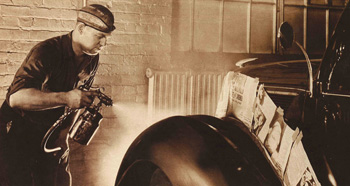 1980s
1980s
The ’80s brought basecoat/clearcoat into the mainstream, though initially the clears lacked the solids necessary for UV protection. Thus, we learned a new phrase: clearcoat degradation. There was also some waterborne use going on at the OEM level, but all we saw in the field was some primer/ filler.
Stricter, tougher state regulations brought even more changes. Rule 1151 in Southern California required us to use heavy-bodied, high solids clears with less volatile organic compounds (VOCs).
About this time, we also learned that our existing spray guns didn’t deliver the transfer efficiency required by the state, and thus we were introduced to HVLP, or high-volume low-pressure. This had been around for decades, but not in our industry. Most of the new equipment we got our hands on was simply existing equipment that had been modified. Gravity-fed guns came into their own here. That was another hurdle that has since been cleared, but back then, in production, it felt like “the proving grounds.”
As lower VOC requirements gained traction, it’s easy to see now that waterborne was where we were headed. Most of the VOCs in the basecoat/clearcoat system came from the color, which was predominantly solvents. Waterborne basecoat was a logical step.
Waterborne
With waterborne, we have a need for cleaner air. In most cases, grade “D” air, which is water and oil free and not less than 19.5 percent oxygen, is desired. This is a breathable grade of air when used in conjunction with the proper paint protection equipment. New air compressors or, at a minimum, multi-stage filtration systems will be going into shops to accommodate this requirement.
We no longer have temperature-specific solvents to accommodate 90 degrees or 60 degrees ambient temperature. There is no “fast” or “slow” water we can add; as a result, we have new innovations of spraybooths, both at the manufacturer level and the “in-field retrofit” level. To maintain production, the booth needs to remain clean and isolated, yet include disruptions of the airflow pattern to facilitate a rapid rate of basecoat evaporation. There is even a pulsating airflow system for increased surface tension disruptions.
Another benefit of waterborne is increased consistency of color application, resulting in better color match and improved color decks from the paint manufacturers. This lends itself for parts to be painted off the car, avoiding the traditional “jambing” of parts, thus improving cycle time.
It’s a safe bet that future trends will continue to be driven by regulations for lower emissions as well as increased efficiency. How the free market accommodates that is yet to be revealed.
Carl Wilson has been painting for nearly 30 years, with formal training from the GM Training Center, ASE, I-CAR and multiple product and color courses. He currently works as a painter at RPMS Auto Body & Paint in Kailua, Hawaii. He can be reached at [email protected].










